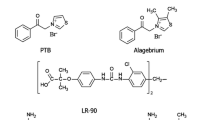Abstract.
The discovery that pyridoxamine (PM) can inhibit glycation reactions and the formation of advanced glycation end products (AGEs) stimulated new interest in this B6 vitamer as a prospective pharmacological agent for treatment of complications of diabetes. The mechanism of action of PM includes: (i) inhibition of AGE formation by blocking oxidative degradation of the Amadori intermediate of the Maillard reaction; (ii) scavenging of toxic carbonyl products of glucose and lipid degradation; and (iii) trapping of reactive oxygen species. The combination of these multiple activities along with PM safety posture it as a promising drug candidate for treatment of diabetic complications as well as other multifactorial chronic conditions in which oxidative reactions and carbonyl compounds confer pathogenicity.
Similar content being viewed by others
Author information
Authors and Affiliations
Corresponding author
Additional information
Received 1 March 2005; received after revision 25 March 2005; accepted 31 March 2005
Rights and permissions
About this article
Cite this article
Voziyan, P.A., Hudson, B.G. Pyridoxamine as a multifunctional pharmaceutical: targeting pathogenic glycation and oxidative damage. CMLS, Cell. Mol. Life Sci. 62, 1671–1681 (2005). https://doi.org/10.1007/s00018-005-5082-7
Published:
Issue Date:
DOI: https://doi.org/10.1007/s00018-005-5082-7




